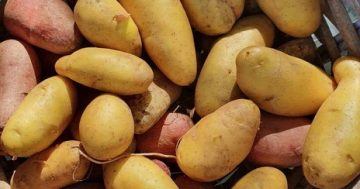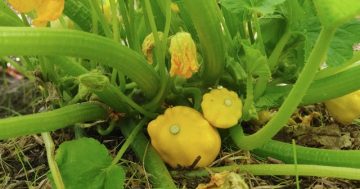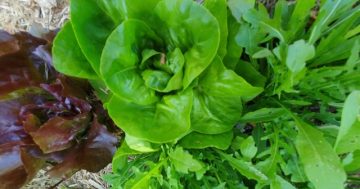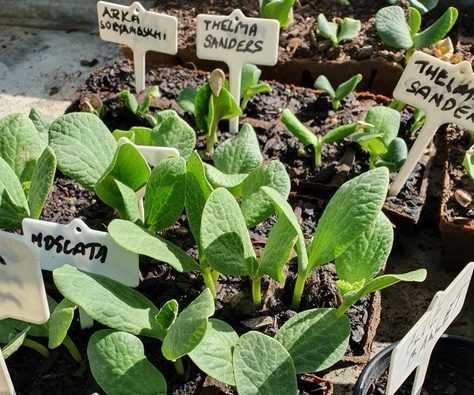
Pumpkin seedlings are ready to plant now. Photo: Helen Lynch.
Did you think spring was here? It is, but we could be forgiven for thinking otherwise.
While September, October and November are transition months and variable weather is expected, recent shifting temperatures have been rather dramatic, giving the vegetable garden a shake-up.
Hopefully we’ve seen the last of the frosts: November is predicted to be warmer than average across Australia.
In cooler areas there may still be a few more frosts though, so have a sheet or shade cloth handy to throw over summer plantings when frost threatens.
It’s also time to keep an eye on the garlic patch, as harvest is on the doorstep. If you’ve planted early season garlic (generally planted in April) then November is harvesting month. So how do you know when your garlic is ready to harvest?
First of all, check that bulb development is happening from around eight weeks before harvest. The only way to check bulb development is to move the dirt away from the base of the stem. If you do this gently you will not cause any damage to the plant.
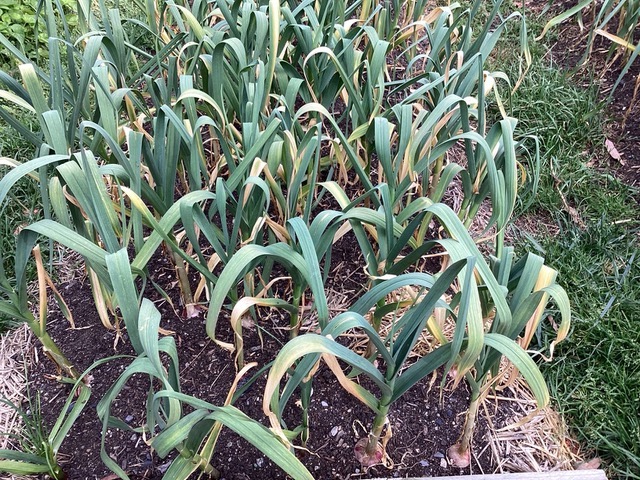
Garlic is approaching harvest, but be careful with your timing. Photo: Helen Lynch.
Scape production, the appearance of the scape, indicates that harvest is about two to three weeks away. This is only relevant in garlic groups that produce a scape.
Turbans, the most commonly grown early season garlic type, are classified as weekly bolting. They may or may not produce a scape, therefore not the most reliable indicator for harvesting.
The best indicator is the number of green leaves on the plant. As the plant and the bulb continue to mature, the lower leaves start to die off.
You need to harvest when there is a minimum of five green leaves remaining on the plant. The number of leaves on the plant equates to the number of wrapper skins on the bulb minus one, ensuring enough layers protecting the bulb at the end of the drying and curing process.
The fewer layers protecting the bulb at the end of the curing stage may well mean you have broken skin, reducing the quality of your garlic and how well it will store. Bulbs can go from nearly ready to collapsing with split skins within a week, so watch them closely.
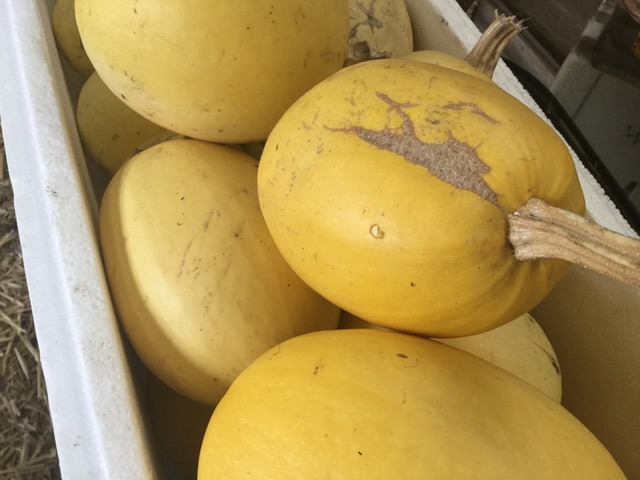
Pumpkins and other squash will benefit from the predicted hot season ahead. Photo: Helen Lynch.
The overall outlook for November to January is for below average rainfall (60 per cent to 80 per cent chance), so it’s worth laying down in-line drip irrigation now.
Mulching will be useful to reduce moisture loss – put the mulch over the irrigation. Mulch will lessen the rate of water evaporation from the soil and keep soil cool.
It’s best to use a relatively coarse mulch: leaf debris, grass clippings and straw or similar (sugarcane mulch etc). A mix of all three, blended in a wheelbarrow, and spread over beds and around plants, makes for efficient watering of the garden.
This “chunky” type of mulch is the best way to avoid mulch holding water, reducing the amount of water that gets through to the soil. Studies suggest optimum depth is around 10cm and no less than 5cm.
Try to get beds mulched by early December or by the time spring winds subside.
All summer vegetable seedlings including tomatoes, eggplant, chilli, capsicum or peppers, pumpkin, squash, cucumber, sweetcorn and beans, home-raised or purchased, can be confidently planted out from early November.
Second or third plantings two to three weeks apart can continue until mid to late December. Later plantings should ripen in mid to late autumn.
Continue planting potatoes. Determinate or short season potatoes (Kennebec, Kipfler, Red Pontiac). These late plantings can remain in the ground when mature and store well in place through winter.
Pumpkin seedlings can go in the ground when they are strong and robust. Beans, sweet corn and squashes can be planted out and grown together. Try the classic “three sisters” planting combination developed by First Nations Americans.

Home-grown broad beans are a delight fresh from the garden and won’t need double-podding. Photo: Helen Lynch.
These vegetables should do well this year as they love hot weather. The last few wet cool summers haven’t been great for these wonderful vegetables.
Finally a word on broad beans. Planted as seed in early to mid autumn (ideal germination is 12c-16c), broad beans can take up to 30 weeks to produce and should be harvestable in mid to late spring.
Many recipes call for broad beans to be “double podded”, that is removing the thin skin that covers each individual bean. Freshly picked, nice, large broad beans do not need it but older beans might. Favourite ways to eat them include as a dip and in any dish that includes feta cheese.
Either way they’re a treat for home-growers who appreciate the full flavour and freshness that only comes from the beans grown in one’s own backyard.
Bronwyn Richards and Helen Lynch run Wynlen House Artisan Village Farm and Learning Centre, a small village organic market garden in Braidwood, NSW. Since 2006 they have grown and sold fresh vegetables, eggs, preserves and garlic and teach others to do the same.
Original Article published by Helen Lynch on Riotact.







